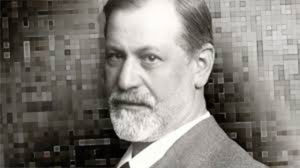Article
Revue Belge
de Psychanalyse
Complexe fraternel et dissymétrie. Emmy von N…
Brindusa Orasanu
N°72 – Complexe fraternel et dissymétrie. Emmy von N…
€5,00
Résumé
Dans la théorie et la clinique psychanalytiques, la figure fraternelle et le transfert fraternel semblent être rarement abordés, et lorsqu’ils sont remarqués, ils semblent être considérés plutôt des défenses contre les transferts parentaux. L’hypothèse de l’auteure est que la transmission de cet évitement le long de l’histoire de la psychanalyse a sa source dans le fait que Freud a découvert la règle de l’association libre pendant qu’il traitait Emmy von N…, patiente qui venait avec un fantasme fraternel d’allure traumatique. Ainsi, le germe même de la dissymétrie de l’association libre dans la méthode psychanalytique pourrait être imprégné d’un tel fantasme fraternel, ensemble avec l’évitement, chez l’analyste, d’une régression vers le traitement «préhistorique» par l’intermédiaire de la suggestion.
Geeft het kind de gender-identiteit of gaat het om sublimatie ? Een te vroege onderbreking van de overdracht.
In de psychoanalytische theorie en praktijk wordt de figuur van broer en zus en de overdracht naar broers en zussen zelden behandeld. Als ze al worden opgemerkt, lijken ze eerder als defensies tegen moederlijke en vaderlijke overdrachten geduid te worden. De auteur van dit artikel stelt de volgende hypothese: de transmissie van deze vermijding doorheen de geschiedenis van de psychoanalyse vindt haar oorsprong in het feit dat Freud de regel van de vrije associatie heeft ontdekt tijdens de behandeling van Emmy von N…., een patiënte die een voor haar traumatiserend fantasme omtrent haar broer binnen bracht. De oorsprong van de asymmetrie van de vrije associatie in de psychoanalytische methode zou dus kunnen ingebed zijn in een fantasme omtrent broers en zussen, samen met het vermijden van de kant van de analyticus van een regressie naar een ‘prehistorische’ behandeling op basis van suggestie.
Fraternal complex and dissymmetry. Emmy Von N…
In psychoanalytic theory and clinic, the fraternal figure and the fraternal transference appear to be rarely approached, and when they are noticed, they seem to be considered rather defences against parental transferences. The author’s hypothesis is that the transmission of this avoidance along the history of psychoanalysis has its source in the fact that Freud discovered the free association rule while treating Emmy von N…, a patient who came with a fraternal fantasy of traumatic aspect. Thus, the very nucleus of the free association’s dissymetry of the psychoanalytic method could be impregnated by such a fraternal fantasy, along with the avoidance of a regression, in the analyst, towards the “prehistoric” treatment by suggestion.





